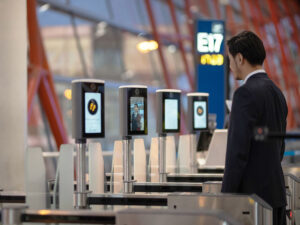Biometric-driven IT solutions are being successfully rolled out across the globe

To prepare for this, 425 major construction projects (worth around US$ 450bn) were already put underway at existing global airports. The industry also invested in 225 new airport projects in 2022, according to the Centre for Aviation, according to a press communique.
SITA’s Biometrics White Paper, ‘Face the Future’ highlights how the surge in air traveler numbers places extraordinary pressure on existing and new airports, national borders, and airline resources. In short, “existing paper-based and manual travel infrastructure and legacy processes simply won’t be able to cope”.
Fingerprint biometrics
The solution, explains SITA, is in harnessing the power of facial and fingerprint biometrics to create a smoother, safer, and slicker air transport experience. By applying advanced technological solutions SITA will also solve other industry challenges, like space constraints, specialist staff shortages, and evolving passenger wants and needs.
The white paper takes us behind the scenes by showcasing successful case studies like the Star Alliance Biometric initiative and the Indian government’s DigiYatra programme. Both cases use the end-to-end biometric passenger processing solution SITA Smart Path.
“SITA Smart Path biometrically enables every step of the passenger journey, from mobile enrollment to aircraft boarding and every point in between and beyond. With facial recognition across as many airport touch points as you need,” commented Stefan Schaffner, VP, Airports, SITA.
